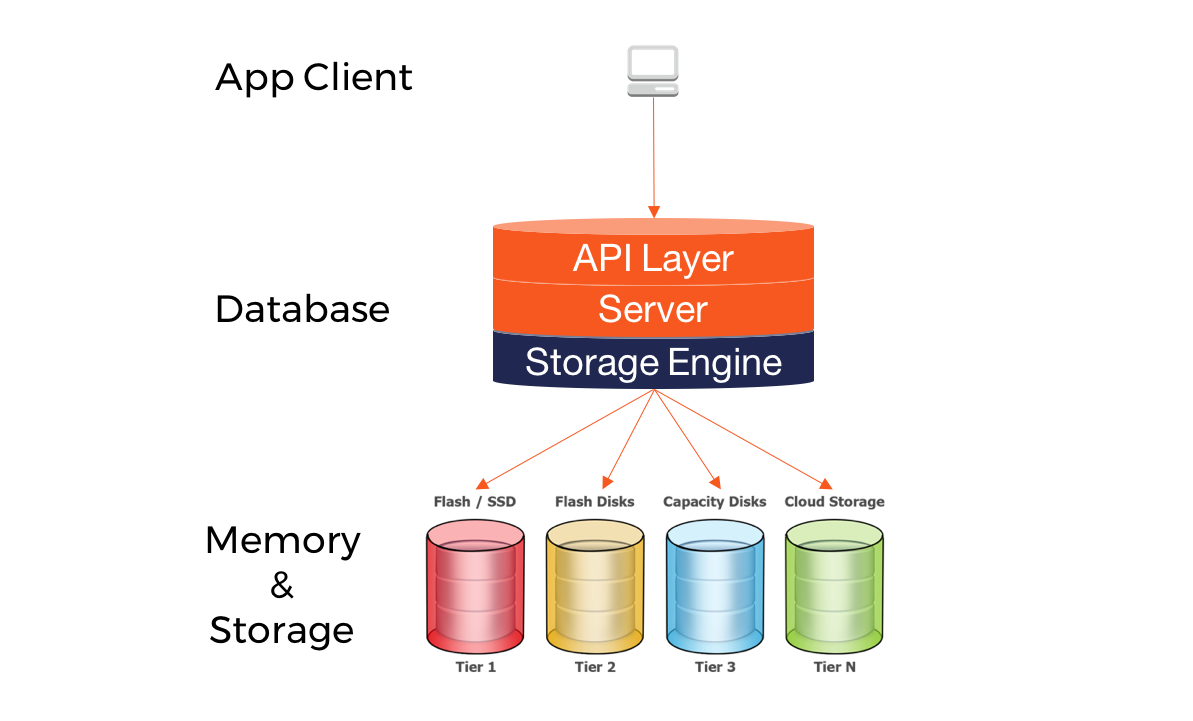Oracle recently announced MySQL tweaks that boost the oracle storage engine and it brings a lot of improvement to its Cloud-hosted version of MySQL which provides some new features along with stability and performance improvement.
The company says it will make life easier for clients and improve efficiency. At the core of the announcement is a new engine software called HeatWave.
The upgrade delivers within the type of MySQL Autopilot which is completely a new element to Oracle’s cloud-hosted model of the Database System.
Generally, collections of software extensions are also known as engines that MySQL uses to write information to disk, users may have to prefer to use open-source engines like InnoDB storage engine or MyISAM storage engine.
The current version of MySQL Developers and users can switch engines without much effort, for their projects and work they are allowed to choose the best performance and protection.
The company expects that anytime most developers will be able to switch to HeatWave while MySQL interference remains the same.

(Image credit: Wikimedia.org)
According to a recent company’s press release- ‘MySQL Autopilot uses the most advanced machine learning techniques to automate the features of HeatWave.
Such few features of HeatWave include data loading, error handling, query execution which all features can help users to achieve high query performance.
It works by Collecting statistics, queries, data, then it uses Oracle Auto Machine Learning to build machine learning models to achieve efficiency.
The new engine can’t be installed locally as of now and can only be used inside Oracle’s cloud. MySQL will definitely enhance more its core capabilities, systems performance over time using AutoPilot and ML.
Now take a look in detail what is the Oracle storage engine, how it works, and how can we set it up?
Storage Engines generally refers as Database Engine are the underlying software component of MySQL that is responsible for managing how data is stored on the disk and the memory, DBMS performs the SQL operation like create, read, update and delete (CRUD) for different tables types.
To enable interactions for a user with the Storage engines almost all Data Base Management systems generally use Application Programming Interfaces (API)’s.
Here are the types of storage engines:
Types of Storage Engine
In MySQL, there are 2 types of storage engines:
- Transactional
- Non-Transactional
Transactional Storage Engine: In modern DBMS, Transactional databases are mostly used due to their rolled-back property.
In these transactional databases write operations can be rolled back even if they do not entirely complete that’s why it is called transactional databases.
Non-Transactional Storage Engine: In non-transactional database engines, there is no rollback option for the users.
If a user wants to perform the rollback in an order they have to do it manually with the codes.
List of Storage Engine
Take a look at the list of storage engines supported by MySQL:
- InnoDB
- MyISAM
- Memory
- CSV
- Merge
- Archive
- Federated
- Blackhole
- Example
InnoDB and MyISAM are the most used storage engine which is supported by MySQL, now we will understand them in detail.
InnoDB Storage Engine
InnoDB storage engine supports transactional databases support and it is a widely used storage engine in Data Base Management Systems.
InnoDB storage engine was the default storage engine before MyISAM and has many advanced features such as it supports row-level locking as well as crash recovery so that users can roll back anytime if they want,
It also supports multi-version concurrency control and the InnoDB storage engine is the only engine that offers foreign key referential integrity constraints.
The Oracle recommends InnoDB for tables due to its high-reliability performance.
InnoDB storage engine has many advanced features and advantages which a user can put into data tables.
The DML operations are referred to as Data Manipulation Language and It includes the following operations:
SELECT – retrieve data from a database.
INSERT – insert data into a table,
UPDATE – updates existing data within a table.
DELETE – Delete all records from a database table.
MERGE – UPSERT operation (insert or update).
CALL – call a PL/SQL or Java subprogram.
EXPLAIN PLAN – interpretation of the data access path.

Database Storage Engines working with API’s and Server
MyISAM Storage Engine
MyISAM storage engine is mostly used for web and data warehousing and provides a table-level locking system.
MyISAM engine was the default storage engine earlier up to version 5.5 of MySQL but due to some drawbacks, another storage engine takes over this MyISAM.
The main drawback of this storage engine was it supported a non-transactional database so that it can not be rolled back if something has gone wrong, although it is much faster compared to other database storage engines.
MyISAM File Characteristics
There are the following three extension files in which MyISAM is stored that includes:
- .frm file – It stores table format.
- . MYD file – It is the data file.
- . MYI file – It is the index file.
What is Oracle Storage Engine?
The oracle storage engine is allowed to store all tables in its own format in its data files, it comes with its own built-in storage engine and user can use different tablespaces to store data files.
Setting Up Oracle Storage Engine
For creating a new table, users have to specify which storage engine to use by adding an Engine table option to the create table statement:
-- ENGINE=INNODB not needed unless you have set a different -- default storage engine. CREATE TABLE t1 (i INT) ENGINE = INNODB; -- Simple table definitions can be switched from one to another. CREATE TABLE t2 (i INT) ENGINE = CSV; CREATE TABLE t3 (i INT) ENGINE = MEMORY;
There are the following ways you can specify the selection of storage options in MySQL:
- When you select the storage option on MySQL 5.6, the default storage engine is selected automatically which is the InnoDB storage engine and you can specify it through the default storage engine server setup option or by setting the default storage engine option in the my.cnf configuration file.
SET default_storage_engine=NDBCLUSTER;
- To alter the table and convert it from one to another storage engine you have to use Alter Table statement.
ALTER TABLE t ENGINE = InnoDB;
- MySQL has automatically created tables by using the default storage engine if the user tries to create a table that is compiled in or not compiled in but it is deactivated.
Here is the best video from Cave of Programming which I’m sharing with you for the beginners to understand how MySQL storage engine works and its configuration:
(Video credit: Cave of Programming)
What is MySQL HeatWave?
The MySQL HeatWave was created by Oracle’s internal experts and researchers after several years of research and development.
It is a parallel, in-memory, high-performance query accelerator integrated with a database of Oracle MySQL that improves the performance of MySQL by collecting statistics for analytic and mixed workloads.
HeatWave is the only service that allows users to run OLTP and OLAP workloads which can be accessed directly from their MySQL database.
Conclusion
These tweaks definitely bring a lot of improvement to its Cloud-hosted version of MySQL which boosts its stability and enhance its efficiency.
So we can conclude that this oracle storage engine from this update got a boost and scaled up its reach to the clients and become more optimized.
FAQs
What is storage engine?
Storage Engines generally refers as Database Engine are the underlying software component of MySQL that is responsible for managing how data is stored on the disk and the memory, DBMS performs the SQL operation like create, read, update and delete (CRUD) for different table types.
What is Engine?
The collections of software extensions are also known as engines that MySQL uses to write information to disk.
What Storage engine does Oracle use?
InnoDB is the default storage engine used by the oracle now which is open-source and widely preferred by the users, InnoDB replaced MyISAM as MySQL's default table type. MyISAM used to use before but as for now InnoDB is more reliable as it has row-level locking and uses transactional logs for auto recovery.
What is Oracle Storage Engine?
The oracle storage engine is allowed to store all tables in its format in its data files, it comes with its built-in storage engine and user can use different tablespaces to store data files.
What Storage engine works with oracle?
InnoDB Storage Engine and MyISAM Storage Engine both works well with Oracle and both have their special features and advantages. An InnoDB storage engine is preferred by users because it is more advanced and reliable than MyISAM.
